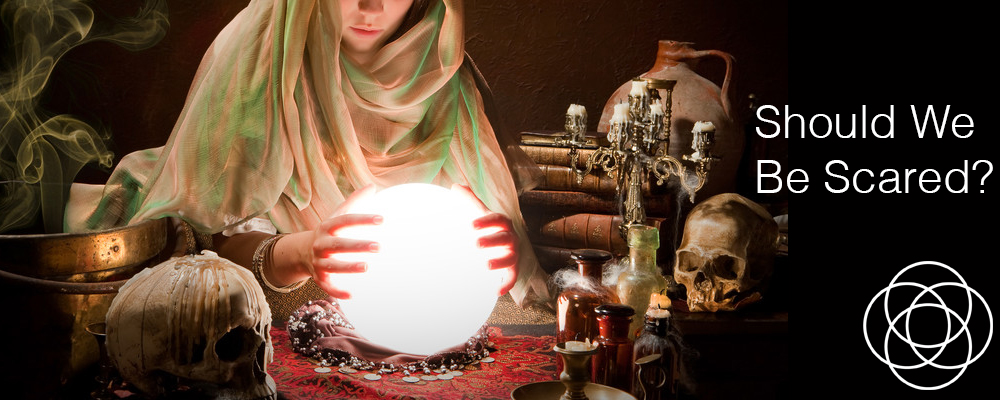“Should we be scared? What’s going to happen? Do you know?” asked a woman sitting close to me, last week, as we waited for the show to begin. The performance space, decked out with memorabilia of unexplained phenomena (a yeti glared down at me from a framed poster), was suitably dimmed, as we sat shoulder to shoulder on the floor.
The show we were about to experience was called It Will Find You. Fear of the unknown was on the menu.
Except it wasn’t totally unknown for me, as I was performing in one of the pieces, Chris Allery’s Three Days Before the Storm, which featured a scary dream. At a certain cue, Chris, the dreamer, and I, the dream analyst, stood up to discuss the dream. It was unscripted; we hadn’t talked about the dream before the performance.
Scary dreams, once analysed, throw light on the basis of our fears. The unknown is removed from the equation. We can look at our fears and how they cause us to live our lives. We can decide which fears are helpful and protective to our wellbeing, and which – the majority – hold us back from growing into a bigger life.
Fear is an emotion, triggered by something known or unknown, registered in the mind, felt in the body through the release of fear hormones designed to prepare the body for fight or flight. Faced with a lion, you might stand your ground and fight, or take flight as fast as you can, either way drawing on that adrenalin-fuelled pumped up energy. Or you might freeze on the spot, a response suitable for animals whose bodies blend in with the background, instantly camouflaged, magically disappearing from sight, or for foxing the predator with your frozen erect hackles, your frozen retracted lips baring your teeth in mock menace.
Faced with a lion, fear is valid and helpful, though whether I would automatically fight, take flight, or freeze on the spot would probably be of little consequence, unless help was at hand in the shape of a nearby car or lion tamer or something or someone to divert the lion’s attention.
Faced with suddenly finding myself on the edge of a cliff my fear would be valid and more helpful in ensuring my survival, assuming I reined in the flight response to a careful measured stepping backwards onto safe ground.
Fear in our daily lives may protect us from stepping out onto a busy road, from driving dangerously, from a whole host of potentially life-depriving situations, but so much of our fear is based on past experience that is no longer relevant, or on false premise, on hand-me-down beliefs from past generations, from home, from school, from church, from the media, from whispers and secrets about the unknown.
This pondering reminds me of a dream I once had:
A door opened and a lion ambled into the room. A frisson of fear iced my bones before the ambling made me look again. This was no lion. It was a mechanical beast, lion skin fabric draped over an articulated timber frame. Yet although the intense fear – the dread – was gone, unease settled in its place.
The mechanical lion circled me then stood behind me, out of view, unseen, and placed a paw on my forehead, on my third eye. He held his paw steady until I felt a warm trickle of water, a thawing of ice, a rivulet of life, a melting into flow. Although I wasn’t lucid in the dream – at no point did I think, hey, this is a dream – I realised what was happening. I saw the thing I feared for what it was, not real, not flesh and blood, but something man-made, or woman-made as its maker was me. It was a fabricated fear, a constructed belief, nothing but fabric and timber, nothing life-threatening, something easily deconstructed now that I had faced it and seen it for what it was. How long had it kept me in its frozen thrall, fearful of giving my intuition (I associate the third eye as a symbol of intuition) full flow?
We all have our mechanical articulations, the unconscious things we say and do, often based on fear. We can identify these in our dreams, put them into words, consciously articulate the fears and their foundations, acknowledge and respect the power they have held over us in the past, then transform them into new structures that support us as we move with curiosity, rather than fear, into the unknown.

